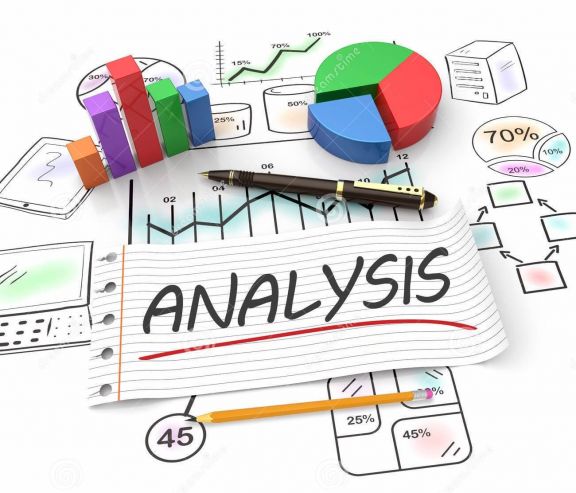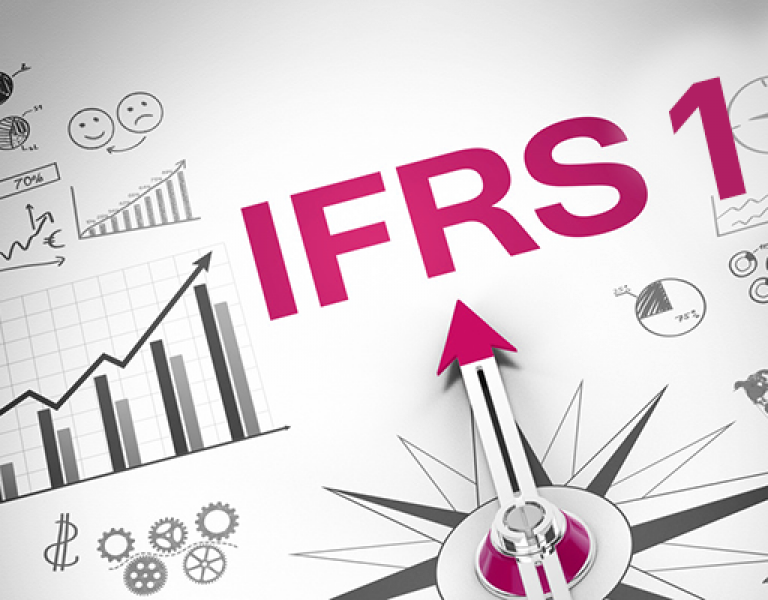Introduction
In my earlier blogs on IFRS16, I always used the Train Operating Companies as the example of why IFRS16 was deemed necessary by the financial reporting authorities. So, it was interesting that our first customer to implement Oracle’s new free Equipment Lease Application was indeed a Train Operating Company. The ‘ownership’ rules for such businesses are complex and, whilst by no means did all the rolling stock leases end up being deemed to fall under the auspices of IFRS16, nonetheless the lease liability that was posted to the balance sheet for the final 27 months of the current franchise was in excess of £700M.
Financial Control
Clearly such large numbers require strong financial control under a company’s delegated financial authority rules, and this was a point of much discussion during the Solution Design phase of the implementation.
The client’s current controls revolved around creating annual purchase requisitions/orders for the lease payments with an associated approval workflow with a hierarchy of financial limits. As lessor invoices are received, they are receipted against the PO and three way matching is achieved.
Standard Equipment Lease functionality creates a payment schedule from the data entered during lease creation, and then has an approval to pay concurrent program, before another program extracts the data from the equipment lease tables to create AP invoices in the Invoice Interface. This functionality works well when there are direct debits in place and DD schedules are being used to manage the VAT. In this case the AP invoices, with system generated invoice numbers, can be used to clear against the cash clearing transactions created by the DDs. However, this is less useful when there is a lessor invoice number to be captured for VAT purposes on the AP Invoice, as was the case with our client.
Our first pass proposed solution was as follows:
- Create a lease approval workflow using their existing hierarchy of financial limits. This would in effect sign off the implied spend over the full life of the lease under the delegated financial authority rules. Our plan was also to initiate this via a WEBADI load of one or more leases and to process the approval before creating the lease in the base tables.
- Redirect the AP Invoice extract process into a set of custom tables, mimicking the standard interface tables, with the output being a spreadsheet detailing all the relevant data. This would then be matched with the lessor Invoices, with the lessor invoice number being entered onto the spreadsheet against the relevant lines. In effect we were providing a direct replacement for the receipting part of the current process. This also had the advantage of allowing the lessor’s invoice grouping of the various leases and assets to be captured. The spreadsheet would then be uploaded via a WEBADI and the data processed into the standard invoice interface, from where normal functionality would create and pay the invoices.
However, the client’s accountants weren’t entirely happy with this solution and really wished to retain their current manual PO/Receipt/Invoice process.
So, we came up with an alternative solution that retained this process.
The standard functionality processes an Amortisation and an Interest stream element each month to create an Accrual Event, which is then picked up by the standard Sub-Ledger Architecture (SLA) functionality to create month end journals to take the amortisation and interest expense. We suggested we extend this functionality to also process the Cash stream to create a third line in the accrual event. Standard SLA functionality would then process this along with the lines for the other two streams. So, the standard AP accounting would have:
Debit Lease Liability
Debit VAT
Credit Payables
Whereas the new additional accrual journal lines would have:
Debit Lease Liability
Credit Lease Control
Meantime the PO would be coded on creation to use the Lease Control account instead of the current Lease Expense account, and so the eventual AP invoice would debit Lease Control. Further, each lease is assigned a code from the Project segment on the accounting key flexfield and this is also captured in the AP invoice and the Cash accrual transactions, thus enabling easy reconciliation of the account.
Financial Accounting
The standard functionality creates 5 streams: Amortisation, Cash, Interest, Liability and ROU (Right of Use Asset) and offers you three main parameters to control the numbers generated by the stream creation functionality. These are the Report from Inception flag; Daily or Periodic Amortisation; and Daily Compound Interest, Linear Compound Interest or Simple Interest.

The ‘Report from Inception’ flag controls the PV date. If set to “no” it will use the first day of the current period. However, if set to “yes” it will use the lease commencement date. This allows you to either account for the lease as if it had been under the auspices of IFRS16 from its real start date or, by setting the lease commencement date to be a ‘transition date’, to account under IFRS16 from that date. This allows for retrospective accounting, so, if you are using spreadsheets and manual journals to account for your leases under IFRS16, you can still make the switch to an automated system accounting process. The system will create catch up accrual journals in the current period for each period from the lease commencement date.
The ‘Daily or Periodic Amortisation’ allows you to control the amount of amortisation taken in a period and this is especially important when you have an irregular 4,4,5 (or other variants) calendar, as our client had, and they could ensure via the Daily Amortisation choice that the 5 week period acquired more expense than the 4 week periods. The choice of interest processing is up to you!
Financial Analysis
The final piece of the client’s accounting puzzle was to provide the requisite financial analysis on the accounting transactions.
This requirement needed all the sophistication available in Oracle’s powerful Sub-Ledger Accounting engine and concerned the following segments as determined by the key accounting flexfield qualifiers:
- The Balancing Segment. The client has another franchise renewal awaiting the DFT which if successful will also require the IFRS16 functionality for a second org in their Rail instance.
- The Cost Centre Segment. Standard requirements for cost centre accounting on expense transactions.
- The Management Segment. The client allocated a project code to each train set, and each rolling stock lease belongs to a particular train set.
- The Secondary Analysis Segment. At some point in the past two operating companies had been amalgamated but the client still likes to analyse them separately and uses their ‘Spare’ segment to do this.
Each of these segments was captured as part of the depreciation expense account code combination for a particular asset on a DFF on the asset’s payment term. Other than the natural account the interest expense used the same segments for the same asset.
Further, the client wanted to distinguish between the asset additions, disposals, accumulated depreciation and depreciation expense natural accounts depending on whether the lease was for Rolling Stock, Plant and Equipment or Land and Buildings.
For this we created three term templates, one each for Rolling Stock, Plant and Equipment and Land and Buildings. We added the four nominal codes above as DFFs on the term template. Each Payment Term then has associated with it one of these Term Templates depending on the category of asset.

The Equipment Lease functionality creates Booking and monthly Accrual transactions for the expense as well as Revision transactions for changes to the lease and/or Termination transactions for an asset or the whole lease. Each of these transactions is created at the Payment Term level.
The standard Create Accounting concurrent program processes each of these transactions using the SLA setup. First it gets the ‘All Segments’ account derivation rule which we had set up to be a constant code combination.
However, we also set up overrides for various of the code combination segments depending on the transaction line type. This uses the Payment Term Id which is passed into the SLA accounting engine from Equipment Lease and is then used as a parameter to call custom sql packages defined in the setup as custom sources. These code packages then use the payment term id to get the requisite account segment from either the code combination in the payment term DFF or one of the DFFs on the Term Template.
Sub-Lease Accounting
The sophistication of the accounting enabled by SLA setup also allows you to account for a property sub-lease rent as an offset to the ROU Asset Cost and Lease Liability created by the main lease as opposed to just taking it as Rental Revenue. This is a requirement for another customer and here we create a Rent Payable Term Template and a Rent Receivable Term Template which will hold the requisite nominal codes so that we can in effect switch the debit and credits from the standard accounting for the main lease payment terms to the opposite for the sub-lease payment terms.
The Implementation
This is new software and, as you might expect, the implementation was not trouble-free. We found a number of issues, particularly around the irregular calendar used by our client. However, we have been able to leverage a relationship with the Oracle Leasing product development team that goes back to 2004 and the first major implementation of Oracle Lease and Finance Management in Europe. They have been forthcoming in working together with us to address the issues and get the client live and their accountants happy.
So much is spoken about Process Automation, but suffice it to say that the Equipment Lease functionality delivers on automating the IFRS16 lease accounting processes and, if it suits your business, the AP invoice creation. So, if you are still managing this all on spreadsheets and associated manual journals, why not get in touch and see how we can automate it for you.
Choosing the right Managed Services Provider
If you are looking for an Oracle partner who can help you with your technology investment, goes about it the right way and can back up the talk, then contact us. You can email us at info@claremont.co.uk or phone us on +44 (0) 1483 549314.
